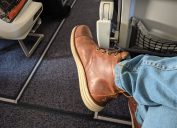6 Things Flight Attendants Won't Tell You About Turbulence
Turn rough air into smooth sailing with these seven simple tips.

When you fly, a little light turbulence is no cause for concern. But anyone who's racked up their fair share of frequent flier miles knows that sometimes, rough air can go from being par for the course to downright dangerous. That's why, as with all emergencies, it's best to be prepared ahead of time with a safety plan in place—and flight attendants say this begins long before you even hit the tarmac. Read on to find out what experts recommend for when turbulence gets especially tough, so you can sit back and enjoy the ride.
RELATED: 10 Clothing Items You Shouldn't Wear on a Plane.
1
Choose your seat wisely.

Flying into areas of severe turbulence is rare, but it can happen on occasion. Cheryl Nelson, a travel preparedness expert and meteorologist, notes that your seat selection may actually prove helpful if you find yourself in this scenario.
"In the rare instances that severe turbulence does occur, sometimes the overhead bins get shaken open and items fall out. If you want to be extra cautious, sit in a window seat to lessen the chances of items falling from the overhead bins hitting you on your head," she advises.
Nelson also recommends choosing a seat in the front of the aircraft or over the wings of the plane. "The wings allow the plane to stay balanced, so you won't feel quite as much there. The front of the aircraft is beyond the center of gravity and is more stable, so you won't feel as much turbulence there either," she explains.
2
Book travel on larger aircrafts.
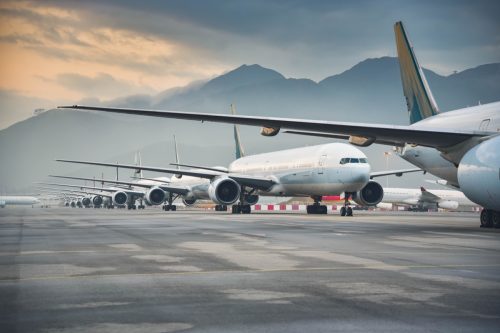
Nelson also says that you can minimize your chances of hitting serious turbulence by booking travel on larger aircraft. "A larger plane weighs more, thus it doesn't feel the impacts as much as a smaller plane," she points out.
RELATED: Unfair Perks: Plane Passenger Shows How Extreme Turbulence Hits Different in First Class.
3
Cover hot beverages.

One of the most common turbulence-related injuries is getting a burn from a spilled beverage, the experts warn.
"Your steaming hot coffee or tea could become a hazard in the event of moderate to severe turbulence. No one wants to be burned, so the next time you encounter turbulence while you have a hot beverage on your tray, think about covering it with a universal travel cup lid," Nelson says, recommending these silicone lids.
4
Pay extra attention when service is suspended.
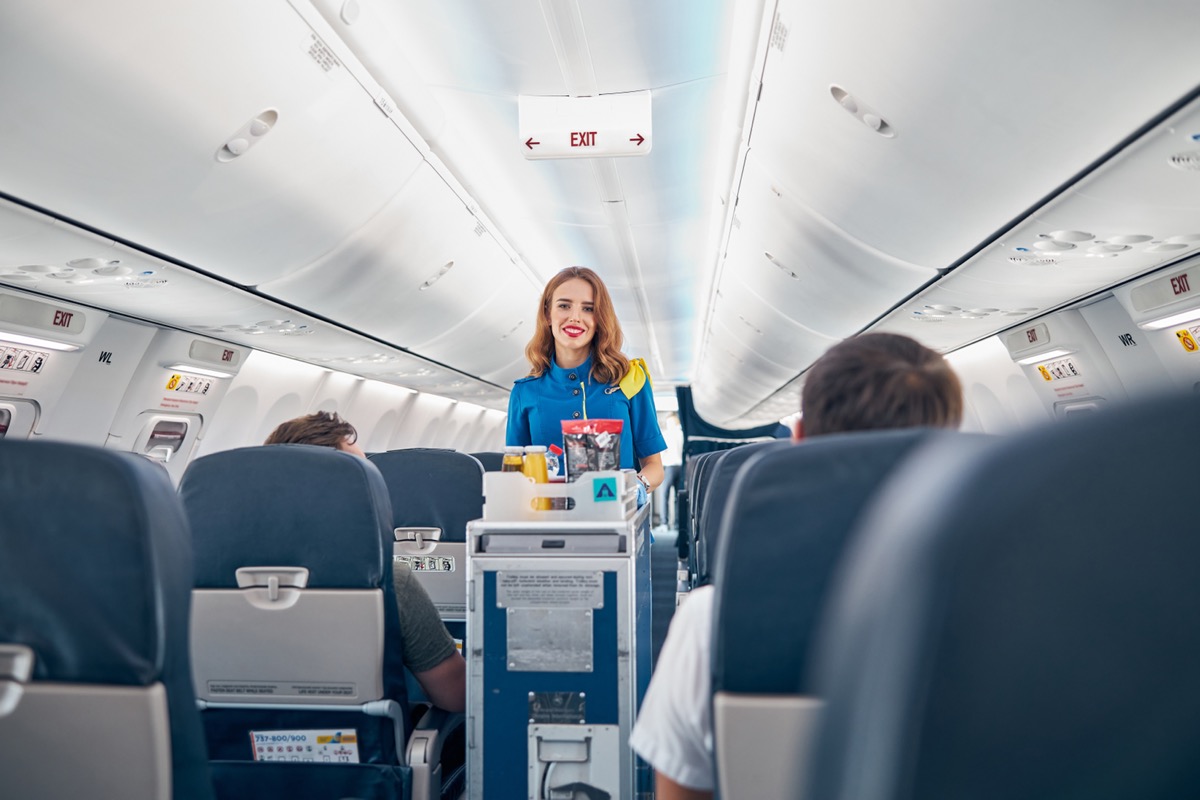
When food and beverage service is suspended on an aircraft, it usually signals that you're about to hit some particularly rough air, according to private airline flight attendant Heidi Ferguson. Take this as your cue to secure anything on your tray table and buckle up if you haven't already.
"If you're working on your laptop during moderate to severe turbulence, be sure to keep your hands on it. You certainly don't want your laptop becoming a projectile and injuring someone in your row," advises Nelson.
RELATED: 11 Worst Days and Times to Fly on an Airplane.
5
Don't try to "beat" the turbulence.
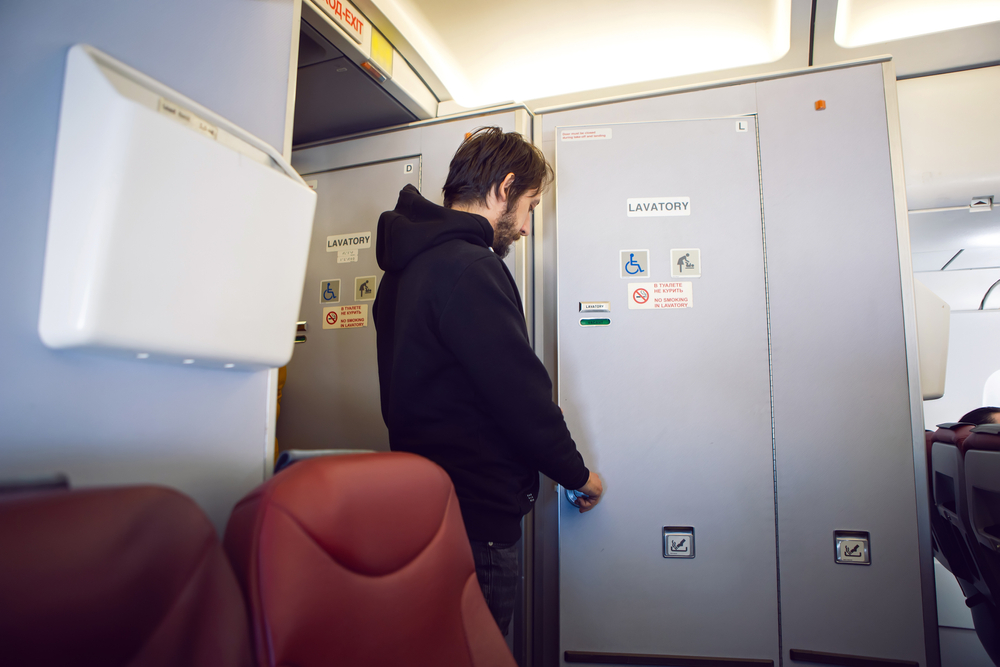
If the pilot or crew announces that there's bad weather or turbulence ahead, that's your signal to stay put. However, Ferguson says that many people will immediately get up upon hearing that announcement, out of fear that they won't be able to get up later.
"A lot of people will jump up and use the bathroom if they hear the announcement that service is going to be suspended or that there's turbulence or bad weather ahead. I have seen people get trapped in the bathroom and screaming for dear life, which is never a good place to be," she shares.
RELATED: Why Severe Turbulence Is Becoming More Common on Flights.
6
Don't panic.
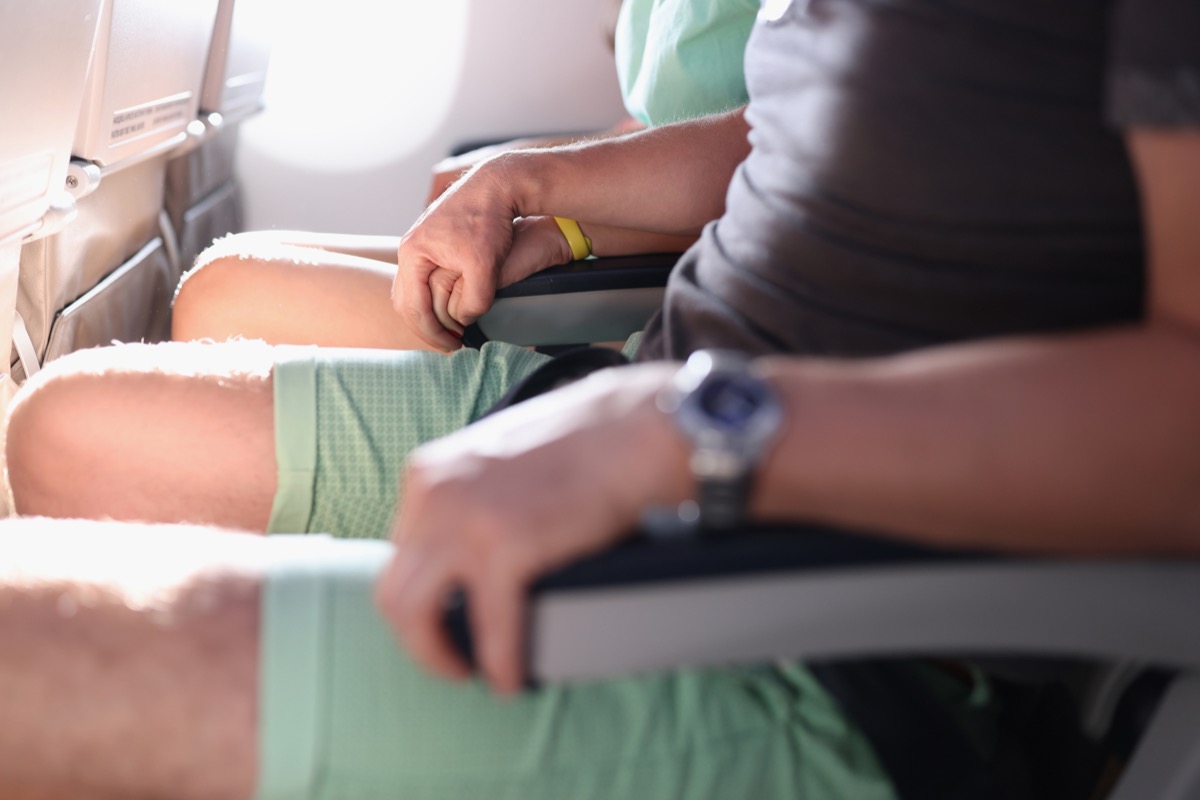
Most importantly, it's important to remember that turbulence is a normal part of the flying experience. Nelson, who's visited all 50 U.S. states and over 40 countries, stays calm when she flies by thinking of turbulence as "hitting potholes in the sky."
"Pilots are trained in aviation meteorology and they do their best to avoid areas of turbulence (towering cumulus and cumulonimbus clouds, for example), but sometimes unexpected rough air cannot be seen," Nelson tells Best Life. "We must remember that turbulence may not always be avoidable, and that meteorology is an inexact science, and because of that, your flights may not always be 100 percent smooth."
Patrick Smith, an airline pilot and host of Ask the Pilot, agrees that it's important not to panic. "The phenomenon is normal and very seldom unsafe. Every flight, every day, is subject to a degree of rough air. Some more than others, of course, but it's simply part of flying, and only rarely are people injured," he says.
For more travel news sent directly to your inbox, sign up for our daily newsletter.
